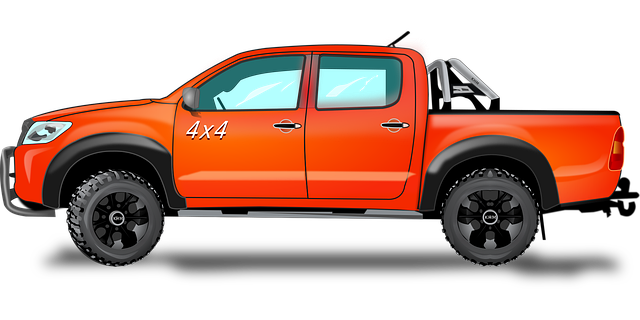In the automotive industry, especially within the demanding environment of the Brownsville fleet, shackles are vital for securing and connecting critical vehicle parts, with a focus on heavy-duty trucks' brake systems. Regular maintenance is paramount to ensure safe truck brake pad replacements, enhancing overall fleet efficiency. Brownsville fleet drivers face unique challenges due to long hours and frequent stops, making proactive measures like timely inspections and brake pad replacements crucial for safety and cost prevention. This SEO-optimized text offers a step-by-step guide for effective truck brake pad replacement in the Brownsville fleet, emphasizing safety and efficiency. Additionally, it highlights the importance of maintaining shackles and brake pads to optimize performance, prevent accidents, and extend the lifespan of braking systems.
“Unleashing the power of knowledge on shackles, this article delves into the intricate world of truck brake pads within the context of the Brownsville fleet. We explore the definition and diverse types of shackles prevalent in these vehicles, emphasizing their role as critical safety components. Furthermore, we uncover the challenges faced by drivers, highlighting the significance of regular maintenance.
Through a comprehensive guide, we navigate the process of efficient brake pad replacement for trucks, offering expert tips to ensure optimal Shackle functionality and longevity.”
- Understanding Shackles: Definition and Types in the Brownsville Fleet
- The Role of Truck Brake Pads: A Key Component in Safety and Performance
- Challenges Faced by Brownsville Fleet Drivers: Why Regular Maintenance is Crucial
- Step-by-Step Guide to Efficient Brake Pad Replacement for Trucks
- Expert Tips for Optimal Shackle Functionality and Longevity
Understanding Shackles: Definition and Types in the Brownsville Fleet

Shackles, an integral component in the automotive world, particularly within the Brownsville fleet, are mechanical devices used to secure and connect various parts of a vehicle. In the context of trucks, they play a critical role, especially when it comes to brake systems. The Brownsville fleet, known for its diverse and robust vehicles, relies on well-maintained shackles to ensure safe and efficient operation, including regular truck brake pad replacement.
There are several types of shackles designed for different applications. In the Brownsville fleet, one commonly finds chain shackles and wire rope shackles. Chain shackles, with their sturdy construction, are often used for heavy-duty tasks, while wire rope shackles offer a lighter yet reliable alternative. These shackles must withstand extreme conditions, from harsh weather to rigorous transportation demands, making regular inspections and maintenance crucial to prevent failures that could compromise safety during truck brake pad replacements or other critical servicing.
The Role of Truck Brake Pads: A Key Component in Safety and Performance

Truck brake pads are an essential component in ensuring the safety and optimal performance of a vehicle, especially in large fleets like those operating in Brownsville. These pads play a crucial role in providing consistent and powerful braking force to bring heavy trucks to a stop efficiently. The quality and condition of brake pads directly impact the overall stopping distance, making them a key factor in preventing accidents and maintaining control on the road.
Regular truck brake pad replacement is vital for fleet managers in Brownsville. Worn-out or damaged pads can lead to reduced braking performance, increased stopping distances, and potential safety hazards. By keeping an eye on wear and tear and replacing pads at the appropriate time, fleet owners can ensure their drivers have maximum control during each trip, enhancing overall road safety and reducing the risk of costly accidents.
Challenges Faced by Brownsville Fleet Drivers: Why Regular Maintenance is Crucial

Brownsville fleet drivers face unique challenges, particularly when it comes to maintaining their vehicles. The demands of their daily routines often involve long hours on the road and frequent stops, which puts immense strain on critical components like truck brake pads. Regular maintenance is not just recommended; it’s crucial for ensuring safety and minimizing costly breakdowns.
Proper brake pad replacement schedules are essential in the Brownsville fleet. Delayed maintenance can lead to worn-out pads, reduced braking efficiency, and even complete failure. This is especially problematic considering the city’s dense traffic and frequent stop-and-go conditions. A proactive approach, including regular inspections and timely brake pad replacements, is vital for drivers to navigate these challenges effectively.
Step-by-Step Guide to Efficient Brake Pad Replacement for Trucks

Performing a brake pad replacement on your truck is a crucial task for maintaining optimal vehicle performance and safety, especially when managing a fleet in Brownsville. Here’s a step-by-step guide tailored for efficiency, focusing on Brownsville fleet Truck brake pad replacement:
1. Safety First: Ensure the truck is securely parked on a level surface and apply the parking brake. Disconnect the negative terminal of the battery to prevent any electrical shocks during the process. This measure is vital for both your safety and that of the vehicle.
2. Inspect the Brakes: Remove the wheels to access the brake pads. Carefully examine each pad, looking for signs of wear, cracking, or discoloration. Replace any worn-out pads immediately to ensure consistent braking performance.
3. Gather Tools and Parts: Before beginning, gather all necessary tools, including jack stands, a jack, new brake pads compatible with your truck model, and any required hardware. Ensure the replacement parts are of high quality, as they directly impact your safety while driving.
4. Remove the Old Pads: With the wheel off, locate the brake calipers and gently push them away from the rotor to expose the old pads. Remove the retaining clips or screws holding the pads in place, taking note of their positioning for easier reassembly.
5. Install New Pads: Slide the new pads into position, ensuring they align correctly with the caliper. Secure them using the appropriate retaining mechanism, following the manufacturer’s guidelines.
6. Reassemble and Test: Put back the calipers, wheels, and any other components removed during the process. Tighten all bolts securely. Once everything is in place, lower the truck from the jack stand, then test the brakes gently to ensure smooth operation.
Expert Tips for Optimal Shackle Functionality and Longevity

When it comes to ensuring optimal shackle functionality and longevity, especially in the context of a Brownsville fleet with heavy-duty trucks, regular maintenance is key. One expert tip is to regularly inspect brake pads, as they play a crucial role in overall shackle performance. The Brownsville fleet Truck brake pad replacement should be part of a scheduled maintenance routine; worn or damaged pads can significantly impair braking efficiency and increase the risk of accidents.
Additionally, keeping shackles clean and lubricated is essential. Dirt and grime buildup can lead to rust and corrosion, affecting their ability to pivot smoothly. Using appropriate lubricants recommended by vehicle manufacturers can help prevent this. Remember, well-maintained shackles not only enhance safety but also contribute to the overall efficiency and longevity of your fleet’s braking system, thereby reducing costs associated with frequent repairs or replacements.
The Brownsville fleet’s reliance on trucks underscores the critical importance of regular maintenance, especially when it comes to truck brake pad replacement. By understanding the various shackle types and their role in safety and performance, fleet drivers can navigate the challenges they face. Implementing a step-by-step guide for brake pad replacement, coupled with expert tips for optimal shackle functionality, ensures not only enhanced safety but also extends the lifespan of these essential components. For the Brownsville fleet, prioritizing these practices means smoother operations and reduced downtime, ultimately contributing to a more efficient and secure trucking experience.



